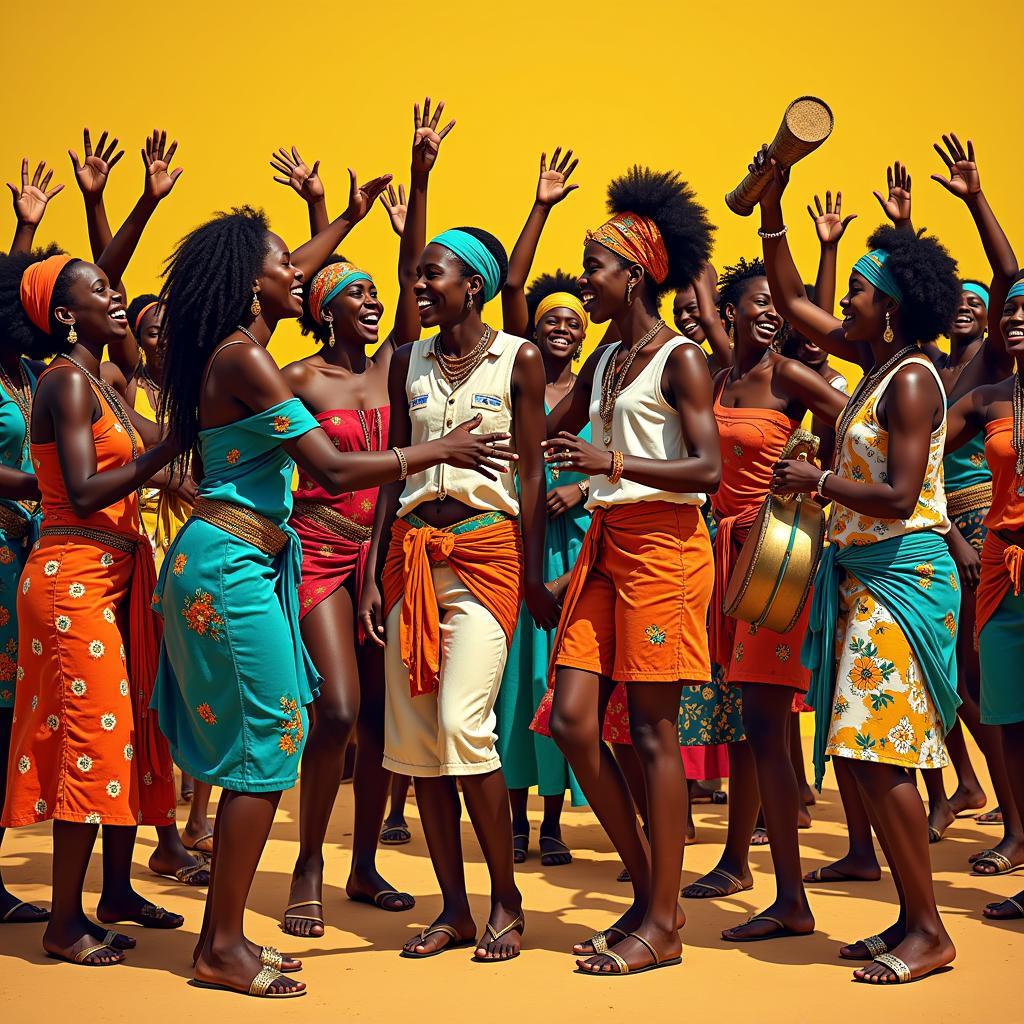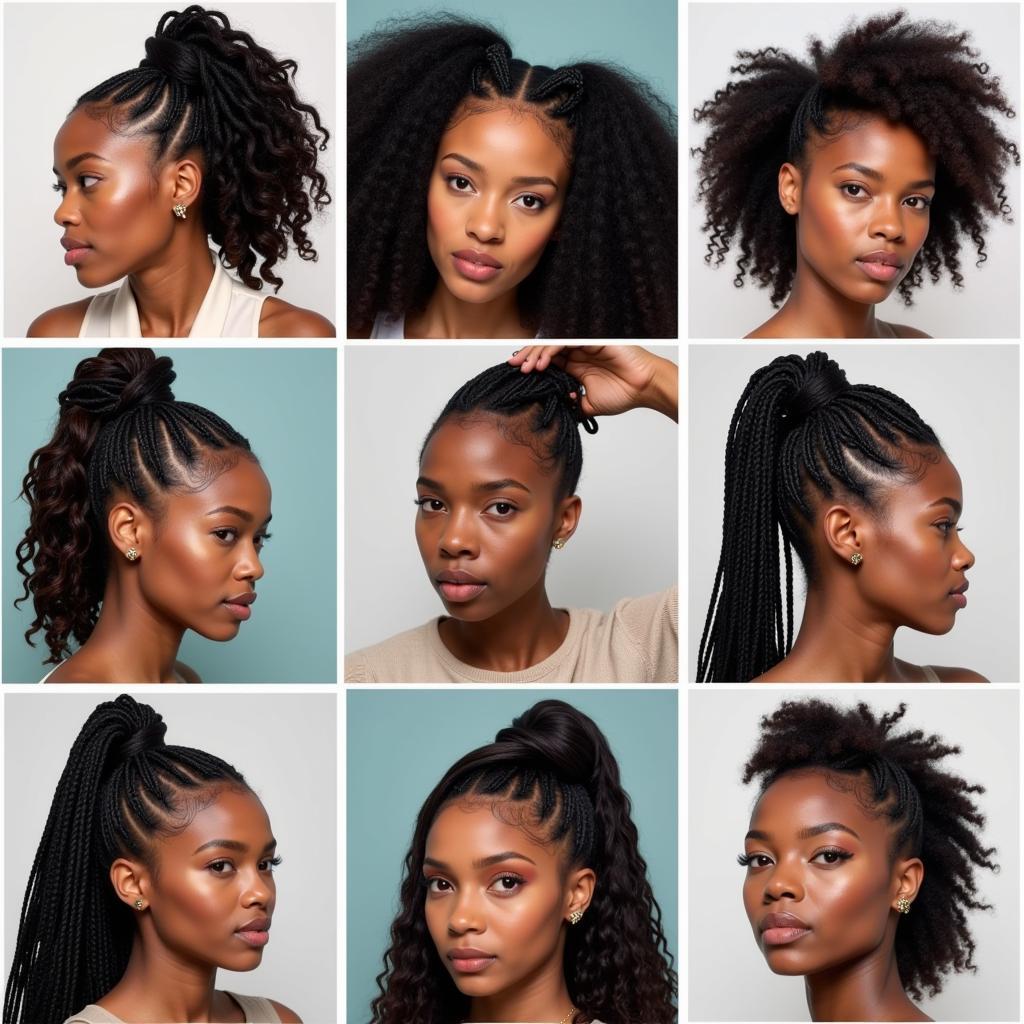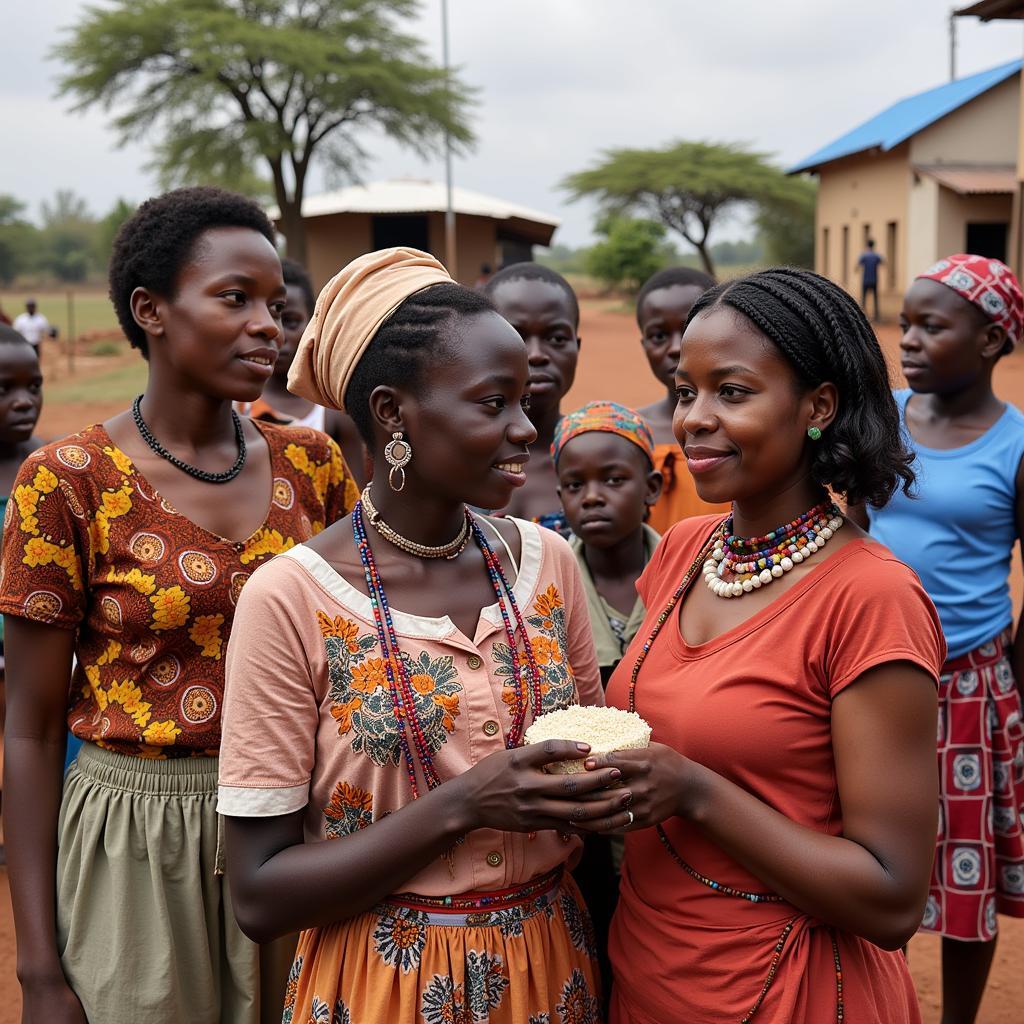Exploring the Diverse Beauty of Africa: Beyond the Search
The allure of “African beauties” is undeniable, but often, searches using such terms can fall short of capturing the true essence of beauty found across this vast and diverse continent. It’s important to remember that Africa is not a monolith but a tapestry of vibrant cultures, each with its own unique standards and expressions of beauty.
Beyond the Stereotype: Embracing the Spectrum of African Beauty
For centuries, the Western world has often imposed narrow and often harmful standards of beauty on Africa. This limited perspective fails to acknowledge the incredible diversity of features, complexions, and body types that exist across the continent’s 54 countries.
From the striking features of the Himba women of Namibia, with their ochre-painted skin and elaborate hairstyles, to the elegant grace of the Maasai women of Kenya and Tanzania, adorned with intricate beadwork and vibrant fabrics, African beauty is a kaleidoscope of individuality and cultural expression.
The Role of Culture in Defining Beauty
In many African cultures, beauty is not just about physical appearance. It’s also about character, kindness, strength, and resilience. A woman’s ability to care for her family, contribute to her community, and uphold her traditions is often seen as equally important as her physical attributes.
For example, among the Yoruba people of Nigeria, a woman’s inner beauty, known as “Iwa,” is highly valued. It encompasses qualities such as honesty, respect, and compassion.
Similarly, the Fulani people of West Africa admire women for their intelligence, wit, and eloquence. A woman’s ability to engage in intellectual discourse and share her knowledge is considered a highly attractive trait.
Celebrating the Diversity of African Aesthetics
The beauty of Africa lies in its diversity. From the lush rainforests of the Congo Basin to the arid deserts of the Sahara, the continent boasts a wide range of natural environments that have shaped the physical characteristics and cultural expressions of its people.
The Wodaabe people of Niger, for example, are known for their elaborate beauty rituals, particularly among men. During the Gerewol festival, men adorn themselves with elaborate makeup, intricate hairstyles, and colorful attire to compete for the attention of women.
In contrast, the Mursi women of Ethiopia are known for their distinctive lip plates, which are seen as a symbol of beauty and social status.
These diverse expressions of beauty challenge Western notions and remind us that beauty is truly in the eye of the beholder.
Appreciating African Beauty Responsibly
While it’s important to celebrate the beauty of Africa, it’s equally important to do so responsibly. Objectification and the perpetuation of harmful stereotypes must be avoided.
Aisha Diop, a Senegalese photographer and cultural commentator, emphasizes, “It’s crucial to engage with African beauty in a way that respects the agency and individuality of the people being represented. We must move beyond the exotic gaze and recognize the depth and complexity of African cultures.”
When exploring the beauty of Africa, let’s embrace the following:
- Respectful Language: Avoid using objectifying or dehumanizing language.
- Cultural Sensitivity: Research and understand the cultural significance of different beauty practices and traditions.
- Authentic Representation: Seek out content created by African artists, photographers, and storytellers who are representing their own cultures.
Conclusion
The search for “African beauties” should be a journey of discovery, one that goes beyond superficial aesthetics and delves into the rich tapestry of cultures, traditions, and stories that make Africa so unique. By embracing diversity, respecting cultural nuances, and celebrating the individuality of its people, we can truly appreciate the multifaceted beauty of this extraordinary continent.



